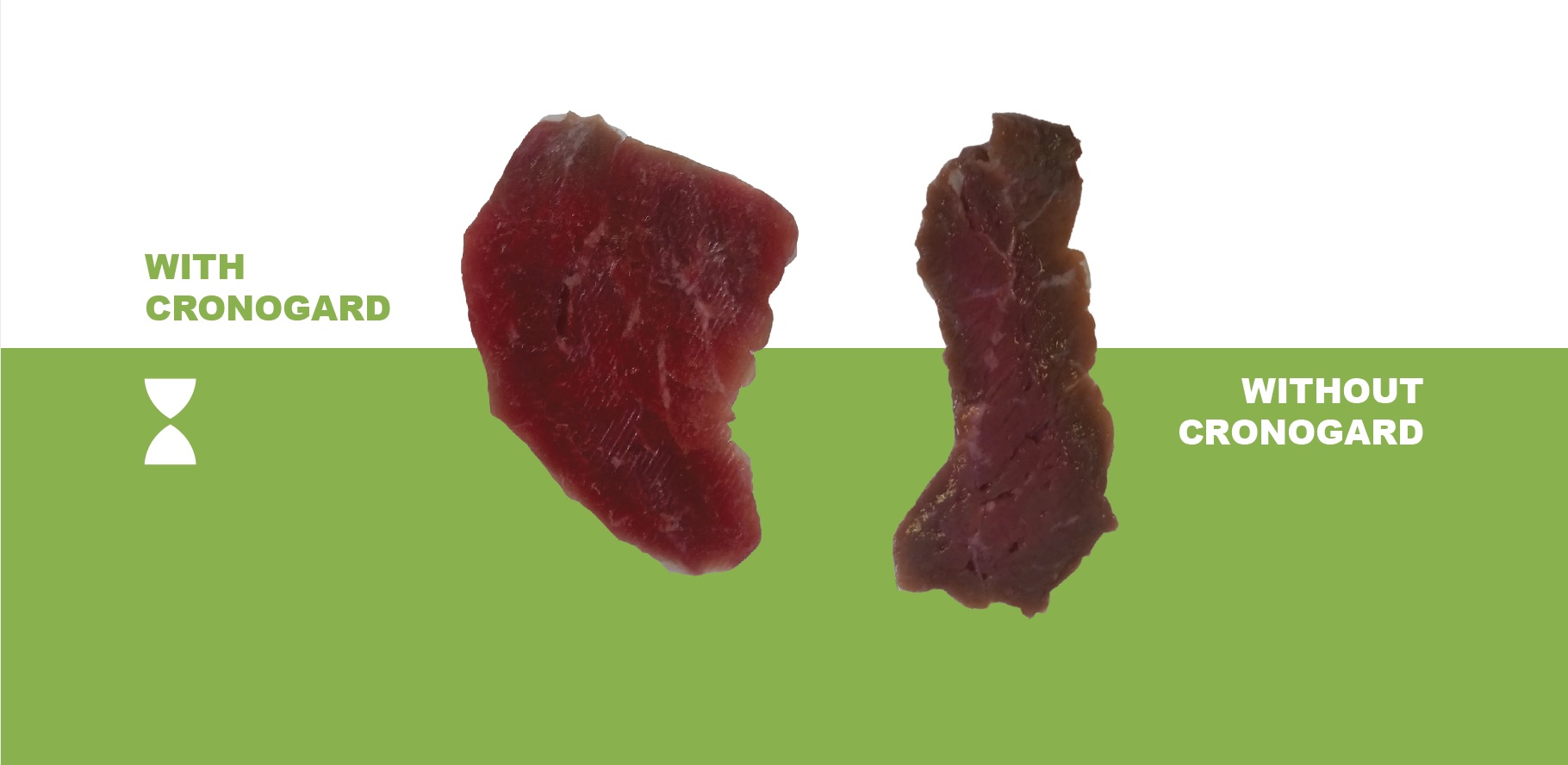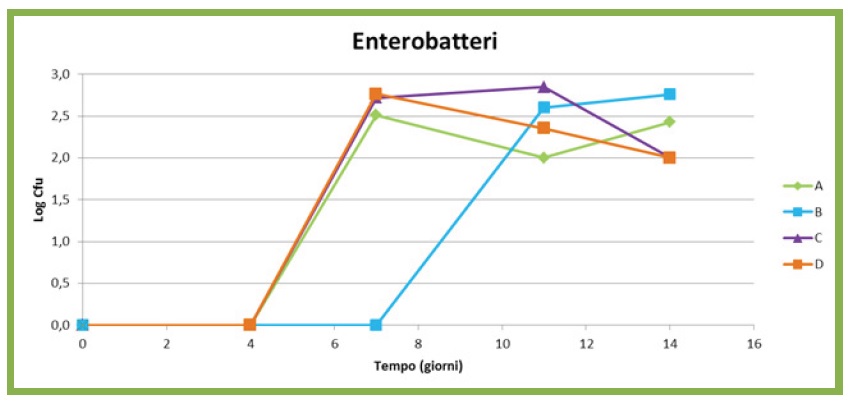
RED MEAT
Photo conditions: after 14 days, photos were taken of the fully untreated packet (A) and fully treated packet (B).
RESULTS
The coating applied to the boxes acted to slow down microorganisms. The fully treated packet (B) was most successful in slowing down bacterial growth and acted earlier than the other packets. The partially treated packets (C and D) were less effective.
TEST CONDITIONS
14 days at 7°C
FILLER
N6O6
Application: Coating
TYPE OF PACKAGING
APET tray with PET film sealing the top.
There were 4 groups:
B. Treated Box + treated film (NO Pad) – (fully treated packet)
C. Treated Box + Standard Film (NO Pad)
D. Treated Box + Treated film + Absorbent untreated pad
A. Sample Referenced -> Standard Box + Standard Film (NO Pad) – (fully untreated packet).

Mesophile Aerobia Count
Until day 7, the microbial count was lower (103/104) in fully treated packet B than the other packets (104/105). Even when the microbial count of packet B increased, it remained 1 log lower than packet A for up to 11 days. At the 14-day mark, however, both packets A and B had similar values.
Packets C and D reacted in similar ways during the first 7 days of storage. Both had more rapid microbial growth in the beginning and higher microbial counts than packet B during those 7 days. From day 8 onward, the microbial growth rate of packets C and D slowed – packet C even showed a small drop from days 11 – 14. By day 14, the microbial values of packets C and D had dropped below that of packet B. However, such a long storage period is not common in commercial industries. Therefore, the best performance was achieved by packet B, which had the slowest microbial growth and overall lowest microbial counts for up to 10 days of storage.
Enterobacteriaceae

Enterobacteriaceae
There was no microbial growth in packets A, C and D for up to 4 days. The fully treated packet (B) had no growth until day 7. In the beginning, the microbial growth was slow, but, at the end of the storage period, the microbial count was about the same for all packets.


